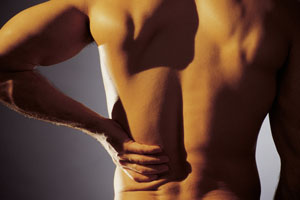
You tweaked your back, pulled a muscle, or injured yourself lifting something incorrectly and suddenly you’ve got a shooting pain in your back. These sudden, temporary episodes of low back pain are characterized as acute low back pain rather than chronic pain. Acute low-back pain episodes are thought to last no longer than three months. This type of back injury may be compared to the common cold because of its temporary nature and because of the belief that each episode of pain is unlikely to recur. In other words, episodes of pain are thought to be independent events, like when you catch different viruses each year.
A new study turns this conception of acute low back pain upside down, suggesting that the natural progression of acute low-back pain may differ dramatically from what experts previously thought.
In the study, 589 acute back-pain patients answered extensive questionnaires on their current episode of pain as well as their history of back pain in general. After analyzing their responses, the researchers found that unlike the common cold, episodes of back pain tend to build off of one another. In the study, 73 percent of patients reported that they had previous episodes of low-back pain. Sixty six percent of those patients said their symptoms were significantly worse during their current episode of back pain compared to their last. The researchers wrote that recurring and worsening nature of back pain suggests that “whatever initiates the pain usually subsides but remains capable of repeating the cycle again.”
If you’re suffering from an episode of acute low-back pain, a chiropractor can help you heal from a current episode of acute low-back pain while helping you learn to practice healthy habits to prevent it from returning,
Reference
Donelson R, McIntosh G, Hall H. Is it time to rethink the typical course of low-back pain?. Physical Medicine and Rehabilitation 2012; doi:10.1016/j.pmrj.2011.10.015.(In press, corrected proof version).
